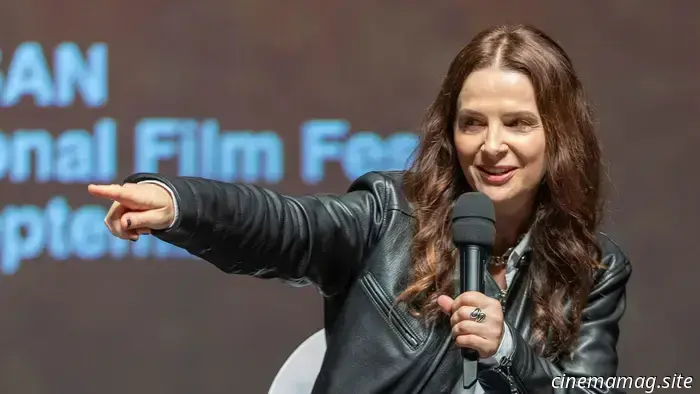
Juliette Binoche Shares Her Thoughts on Collaborating with Krzysztof Kieślowski at the Busan International Film Festival.
In 2008, Juliette Binoche collaborated with dancer Akram Khan on in-i, an avant-garde dance performance centered on a couple's faltering relationship. They showcased the piece 120 times in theaters across the globe. Binoche’s sister, Marion Stalens, filmed a documentary about the production titled Juliette Binoche dans les yeux, which was released in 2009. Now, 16 years later, Binoche has created her own documentary, In-I In Motion, using the original film along with 170 hours of outtakes and rushes.
At this year’s Busan International Film Festival, Binoche participated in interviews, Q&A sessions, press conferences, and a master class focused on her directorial debut. The Academy Award-winning actress has collaborated with notable directors including Jean-Luc Godard, Leos Carax, and international filmmakers such as Abbas Kiarostami, Hou Hsiao-hsien, and Hirokazu Kore-eda. The festival showcased classics such as Three Colors: Blue and The Lovers on the Bridge, along with In-I In Motion.
During a press conference, she acknowledged, “I know it’s too long as a film." She mentioned that the experience of screening the film at San Sebastian was enlightening. "The next time you see me at another festival, the film will be different. It needs to improve because currently, it feels repetitive in its monologues and scenes."
Binoche meticulously examined all the rushes, outtakes, rehearsal footage, and audio recordings from the original documentary, humorously noting, “I found it very challenging to sit for hours, days, and years. The lower back pain was not enjoyable.” She enlisted three different editors to help craft a narrative. Rather than writing a script, she used a whiteboard in her studio to display pictures of each scene. This method highlighted the distinctions between a theatrical production and filmmaking.
She remarked, “You don’t have the same perceptions. People who witnessed the performance will have a specific memory of it. But when I utilize close-ups, they experience the show from a different perspective. The choices made as a director influence how audiences perceive the piece. That was crucial for me.”
Binoche was taken aback to realize that the hours of improvisation she initially found intriguing with Akram Khan “turned out to be mostly unproductive.” Nevertheless, the documentary reveals vital details about the physical challenges of the project. At one point, Binoche states, “Dance is about suffering,” to which Akram responds, “So is acting.” The film captures interactions between Binoche and acting coach Susan Batson and rehearsal director Su-Man Hsu, who assisted in enhancing her dance while she provided acting guidance to Khan.
“I reminded the dancer that you don’t stop acting just because you’ve finished your lines,” she recalled. “Susan suggested that if you merely count and focus on movement while dancing, it lacks substance. You need to elevate your actions to movement. That was my challenge.”
“It’s possible to engage in another art form, even without prior knowledge, if you begin with a feeling. That’s the essence of art. You start from an internal world. The specific form is irrelevant. Authenticity, truth, and personal connection are what matter.”
What Binoche found particularly challenging during the editing process was reconciling her memories of the production with the reality captured in her footage. “Finding the right balance is what directors do,” she said. “It took me a while of watching dailies to identify that path. Intuition is just that. You might not understand why you feel a certain way, but you do. It’s inexplicable.”
In discussing Three Colors: Blue, Binoche revealed she based her character on a language coach who had lost her husband and child. She also recalled her clashes with director Krzysztof Kieślowski regarding his filming approach. Kieślowski came from a background in Poland where filmmaking was extremely costly. “Most of the time, he only wanted to do one take,” she recounted. “We would rehearse five times but then only shoot one take. I was pushing back, saying, ‘Krys, please let me do one more.’”
Binoche noted that Kieślowski would express dissatisfaction if her performance differed from the rehearsal. “It was challenging for him to comprehend that I am not a mechanical actress. My craft needs to emerge from a more enigmatic place. It was a struggle to get a second take unless there was a technical issue. Sometimes I had to say, ‘Hey, Krzysztof, there was a technical problem,’ which turned into a sort of running joke between us.”
She believed that without pushing Kieślowski, she would end up repeating her performance that night. She added that directors often make their choices in the editing room rather than on set. “I told him, ‘You’re in France now; you can take as many





Other articles
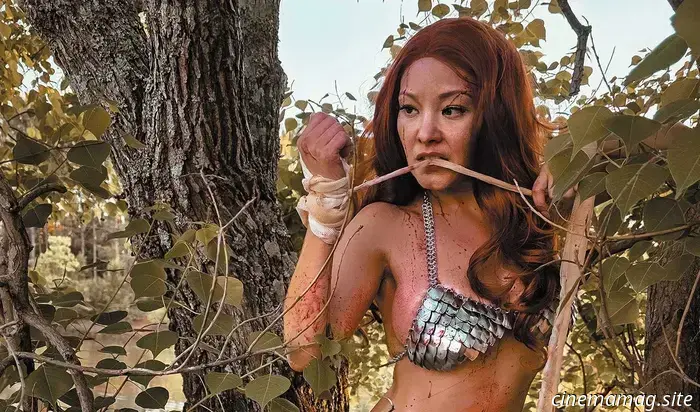 Comic Book Preview – Sonja Reborn #2
Dynamite Entertainment will release Sonja Reborn #2 this Wednesday, and you can take a look at a sneak preview of the issue below with the official preview… Believing she is either dreaming or hallucinating…
Comic Book Preview – Sonja Reborn #2
Dynamite Entertainment will release Sonja Reborn #2 this Wednesday, and you can take a look at a sneak preview of the issue below with the official preview… Believing she is either dreaming or hallucinating…
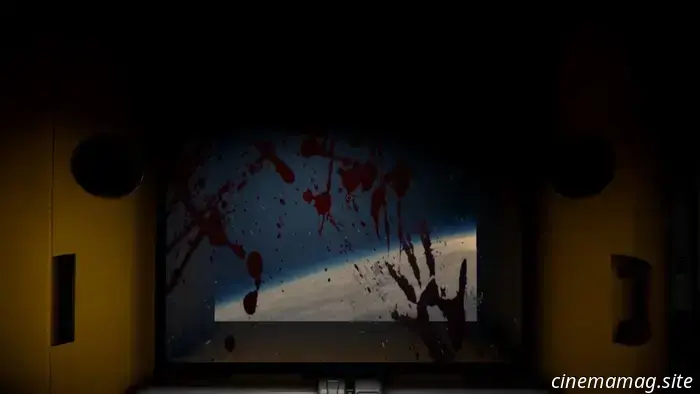 The Toxoplasma trailer hints at an upcoming survival horror set in space.
Indie developer SimmeringConcrete has revealed that their upcoming space horror game, Toxoplasma, will be available on Steam for PC. Venture into space and discover the creation of a deadly bioweapon capable…
The Toxoplasma trailer hints at an upcoming survival horror set in space.
Indie developer SimmeringConcrete has revealed that their upcoming space horror game, Toxoplasma, will be available on Steam for PC. Venture into space and discover the creation of a deadly bioweapon capable…
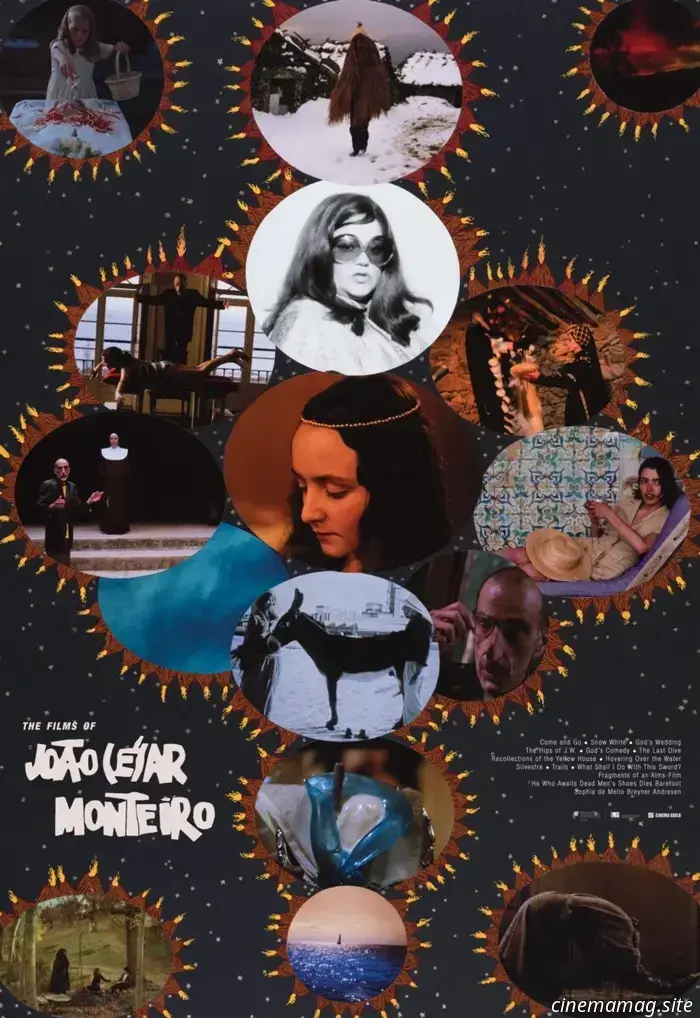 Exclusive Trailer for the João César Monteiro Retrospective by Cinema Guild and MoMA Brings Back the Legacy of One of Portugal’s Finest Filmmakers.
In the past five years or so, I haven't come across a filmmaker I admire more than João César Monteiro, whom I would describe as the closest equivalent in cinema to Philip Roth, or, as my friend Ian Barr puts it, "like Chaplin's Tramp mixed with Chaplin's real-life romantic experiences." To mention God's Comedy, God's Wedding, and Hovering Over the...
Exclusive Trailer for the João César Monteiro Retrospective by Cinema Guild and MoMA Brings Back the Legacy of One of Portugal’s Finest Filmmakers.
In the past five years or so, I haven't come across a filmmaker I admire more than João César Monteiro, whom I would describe as the closest equivalent in cinema to Philip Roth, or, as my friend Ian Barr puts it, "like Chaplin's Tramp mixed with Chaplin's real-life romantic experiences." To mention God's Comedy, God's Wedding, and Hovering Over the...
 Comic Book Sneak Peek – Fire and Ice #4
Dynamite Entertainment is set to release Fire and Ice #4 this Wednesday, and you can check out a sneak peek in the official preview below... While she is in the process of passing her powers to Prince Nekron, the sorrow...
Comic Book Sneak Peek – Fire and Ice #4
Dynamite Entertainment is set to release Fire and Ice #4 this Wednesday, and you can check out a sneak peek in the official preview below... While she is in the process of passing her powers to Prince Nekron, the sorrow...
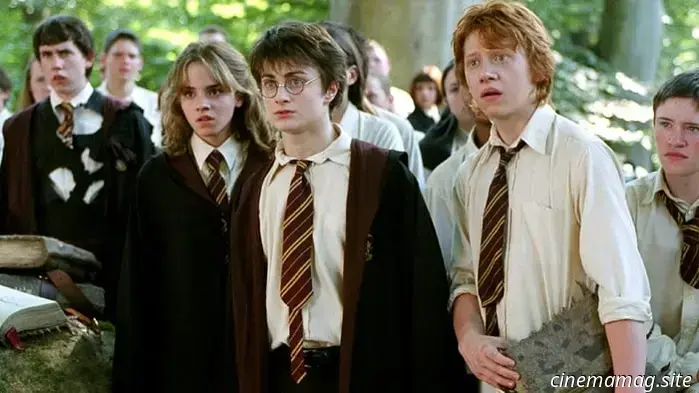 The Movie Franchises Most Frequently Re-watched by Dutch Audiences in 2025
Certain movies retain their charm indefinitely. Even after the credits finish, you find yourself rewatching them repeatedly. In the Netherlands, there are several film series that have turned into go-to comfort films – the ones that people revisit...
The Movie Franchises Most Frequently Re-watched by Dutch Audiences in 2025
Certain movies retain their charm indefinitely. Even after the credits finish, you find yourself rewatching them repeatedly. In the Netherlands, there are several film series that have turned into go-to comfort films – the ones that people revisit...
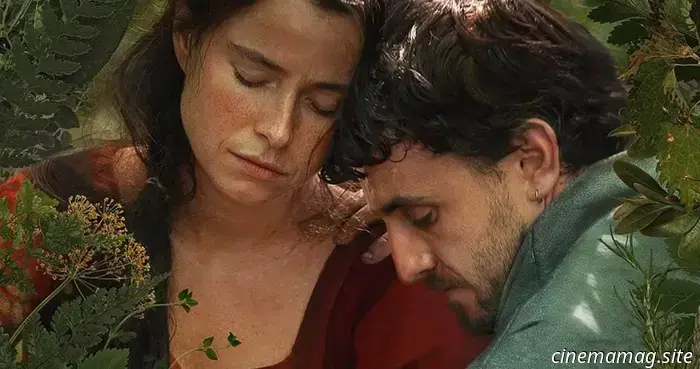 Review of "Hamnet" at the 2025 BFI London Film Festival
Hamnet, 2025. Directed by Chloe Zhao. Featuring Jessie Buckley, Paul Mescal, Joe Alwyn, Emily Watson, Jacobi Jupe, and Noah Jupe. SYNOPSIS: An intense narrative of love and grief that motivated the formation...
Review of "Hamnet" at the 2025 BFI London Film Festival
Hamnet, 2025. Directed by Chloe Zhao. Featuring Jessie Buckley, Paul Mescal, Joe Alwyn, Emily Watson, Jacobi Jupe, and Noah Jupe. SYNOPSIS: An intense narrative of love and grief that motivated the formation...
Juliette Binoche Shares Her Thoughts on Collaborating with Krzysztof Kieślowski at the Busan International Film Festival.
In 2008, Juliette Binoche collaborated with dancer Akram Khan on in-i, an experimental dance piece exploring a couple's disintegrating relationship. They showcased the work 120 times in theaters globally. Binoche's sister, Marion Stalens, created a documentary focused on the production, titled Juliette Binoche dans les yeux, which was released in 2009. Now, 16 years later, Binoche has
